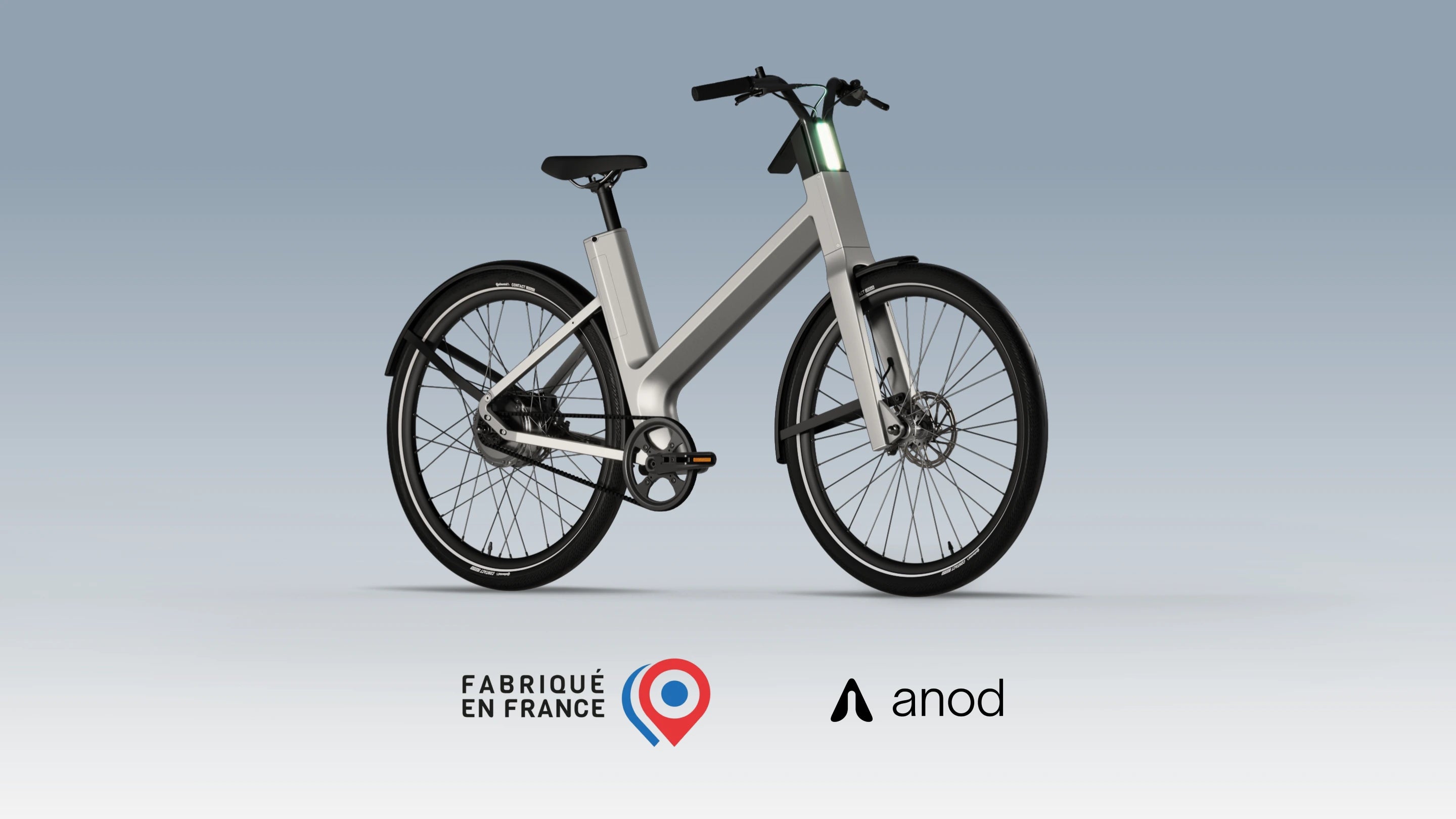Everything you need to know about the anatomy of a bicycle
Are you wondering what distinguishes an electric bike from a conventional bike? We will detail the specific components of each model, compare their advantages and disadvantages, and present the Anod hybrid bike.
As an amateur or experienced cyclist, it is therefore essential to understand your bike and know why choosing a hybrid, VAE or electric model can transform your cycling experience!
What is an electric bike?
There are two main types of electric bikes which differ in their motors.
First of all, the motor of a classic electric bike starts as soon as the vehicle is started and only stops when the driver manually switches it off.
The motor of an electric-assist bicycle (EAB) is called "intelligent" because it adjusts to the rhythm of the cyclist's pedaling. An integrated sensor detects the vibrations generated by pedaling and activates the motor only when the cyclist pedals, automatically deactivating it as soon as he stops.
An Electrically Assisted Bicycle (EAB) is a bicycle equipped with an electric motor and a rechargeable battery . These components help to assist the cyclist in pedaling, reducing the effort required to move, especially over long distances or on hilly terrain.
The basic components of an e-bike include, for example, the motor , usually integrated into the wheel hub or crankset, the battery attached to the frame or luggage rack, and a controller to regulate the assistance. A pedal sensor and a control display showing information such as speed and battery level often complete the equipment.
Unlike a conventional bicycle, which relies entirely on the rider's muscular strength, the e-bike offers electric assistance that is triggered as soon as you start pedaling. This assistance can then be adjusted as needed, allowing you to choose between a more sporty mode or a more comfortable and less physically demanding mode.
This flexibility makes the e-bike particularly popular among those who want to make their daily commute easier, the elderly, or those who want to reduce their carbon footprint without arriving exhausted at their destination.
It is important to know that the popularity of electric bikes continues to grow, especially in urban areas , where they represent an ecological and efficient alternative to cars and public transport. Avoiding traffic jams and parking fees while promoting physical activity, everything then becomes possible!
Anatomy of a classic bicycle
Electrically assisted bicycles (EABs) are distinguished from conventional bicycles by several specific components that increase their functionality and performance :
- The battery , generally rechargeable and fixed to the frame or luggage rack, is the central element providing the energy necessary for the electric motor;
- This motor , often integrated into the wheel hub or the crankset, helps the cyclist by providing pedal assistance, which makes journeys easier and less tiring, especially on slopes;
- The controller , another essential component, regulates the power delivered by the motor based on the rider's commands and the data from the pedal sensor. It ensures a smooth transition between the different assistance levels and optimizes energy efficiency.
Anatomy of an EAB: The specific components

What are the different parts of a bicycle? To answer this question, let's look at the main components of a classic bicycle, each of which plays a vital role in the functioning and performance of the whole:
- Frame : The frame is the central structure of the bicycle, usually made of aluminum, steel, carbon or titanium. It supports all the other components and largely determines the handling and comfort of the bicycle;
- Wheels : Wheels, consisting of rims, spokes and hubs, are crucial to the movement of the bicycle. Tires, mounted on the rims, provide grip on the ground and influence the ride quality;
- Drivetrain : The drivetrain includes the crankset, chainrings, chain, front and rear derailleur, and sprockets. It is essential for converting pedaling force into motion and changing gears to adapt to different terrain conditions;
- Brakes : Braking systems, whether rim brakes (caliper brakes) or disc brakes, are essential for slowing and stopping the bike. They are operated by the brake levers located on the handlebars;
- Handlebars and stem : The handlebars, attached to the stem, allow you to steer the bike. They also come in several shapes (straight, curved, drop) to adapt to different riding styles and comfort preferences;
- Saddle and seat post : The saddle, mounted on the seat post, provides a seating point for the cyclist. It can be adjusted in height for optimal comfort;
- Pedals : The pedals, where the cyclist places his feet, transmit the pedaling power to the chain and wheels. They can be flat or equipped with attachment systems for better efficiency;
- Fork : The fork holds the front wheel and is often equipped with suspension to absorb shocks, especially on mountain bikes.
Additional elements on an e-bike
Electrically assisted bicycles (EABs) differ from conventional bicycles by several specific components that increase their functionality and performance :
- The battery , generally rechargeable and fixed to the frame or luggage rack, is the central element providing the energy necessary for the electric motor;
- This motor , often integrated into the wheel hub or the crankset, helps the cyclist by providing pedal assistance, which makes journeys easier and less tiring, especially on slopes;
- The controller , another essential component, regulates the power delivered by the motor based on the rider's commands and the data from the pedal sensor. It ensures a smooth transition between the different assistance levels and optimizes energy efficiency.
How the VAE works
The operation of an Electrically Assisted Bicycle (EAB) relies on the harmonious interaction of its electrical components to increase pedaling efficiency. When the cyclist begins to pedal, pedal sensors detect the movement and send a signal to the controller.
This controller then regulates the power supply to the motor according to the level of assistance chosen by the cyclist. The motor, powered by the rechargeable battery, provides proportional assistance, thus reducing the effort required to pedal. This allows a constant speed to be maintained with less fatigue, particularly useful on hilly terrain or during long journeys.
The combination of these elements – sensors, controller, motor and battery – ensures smooth and efficient assistance, transforming each pedal stroke into optimized propulsion.
For more information on choosing the right e-bike for you, check out our buying guide !
The Anod Hybrid, the first 100% French supercapacitor electric bike 
The Anod Hybrid represents a major advance in the field of electric bikes, in particular thanks to its brake energy recovery motor, supplemented by supercapacitors that store and quickly redistribute the accumulated energy. These supercapacitors provide electric assistance even when the battery is flat. To avoid relying solely on braking, a battery provides power over long distances. Thanks to this dual storage source, Anod offers a lightweight and easily transportable battery, weighing only 650g, compared to 2 to 4 kg for the competition.
Designed and manufactured in France, this revolutionary bike combines the benefits of an e-bike with cutting-edge technology. The motor and controller are optimized to work harmoniously with these innovations, providing smooth and instant assistance. The Anod Hybrid's strengths include simplified maintenance, reduced weight, and consistent performance in all weather conditions. Perfect for urban commutes, daily travel, and outdoor escapades, this bike combines power and reliability for an unrivaled riding experience.







